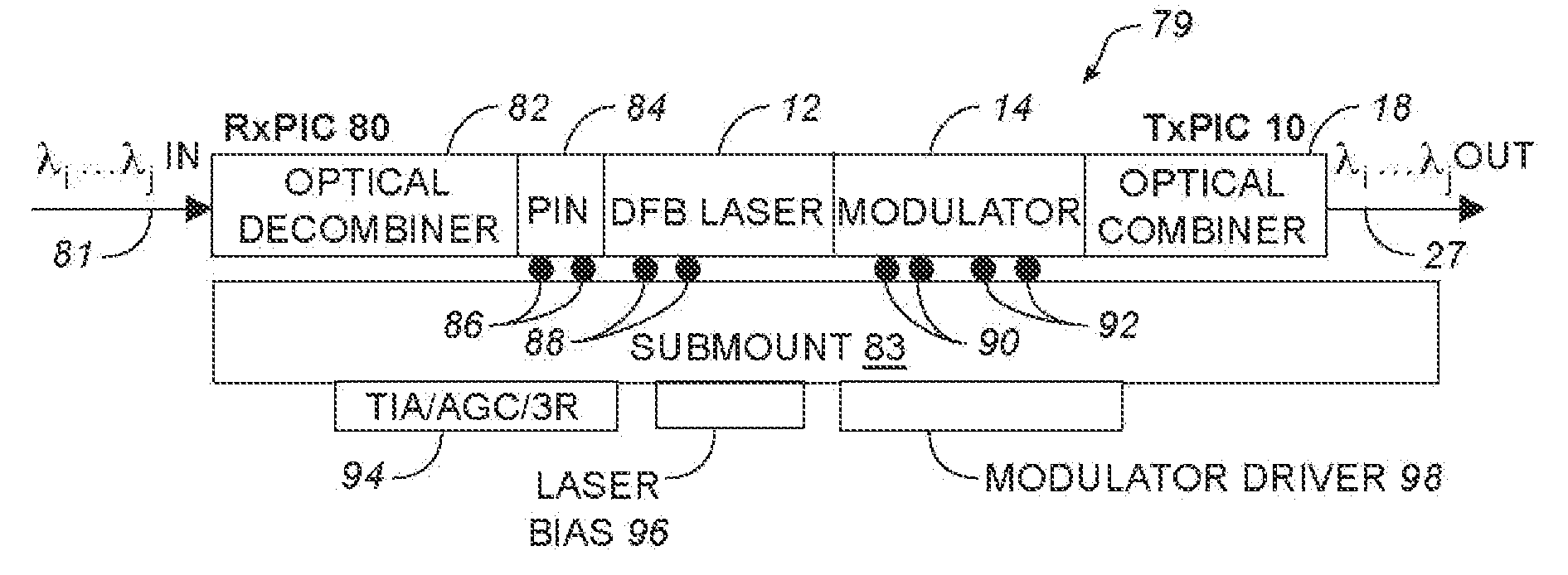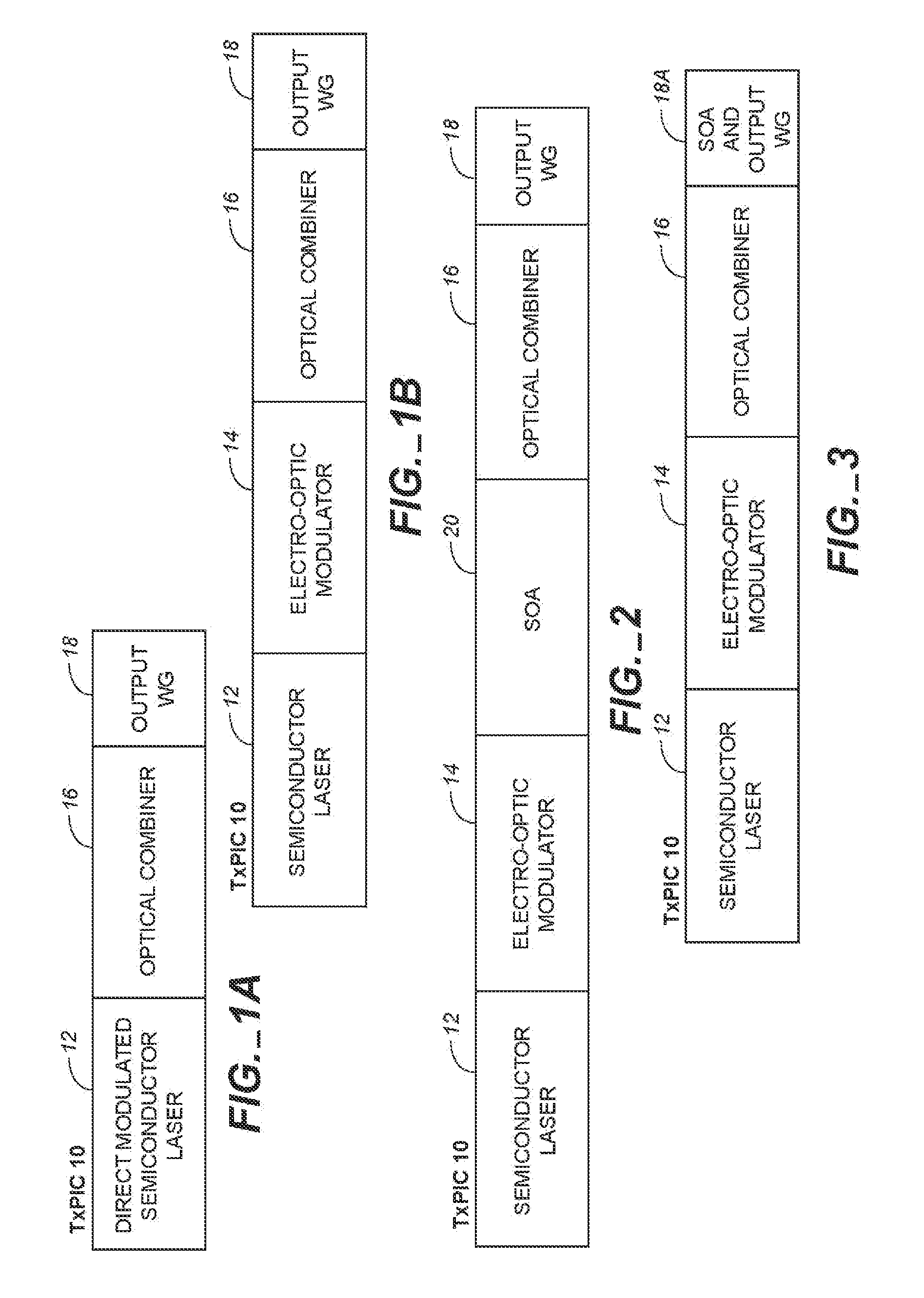Monolithic transmitter photonic integrated circuit (TXPIC) having tunable modulated sources with feedback system for source power level or wavelength tuning
a photonic integrated circuit and transmitter technology, applied in electromagnetic transmission, electromagnetic transmission, semiconductor lasers, etc., can solve the problems of degrading channel signals, reducing optical insertion losses, and limiting bandwidth, so as to reduce the number of optical connections necessary
- Summary
- Abstract
- Description
- Claims
- Application Information
AI Technical Summary
Benefits of technology
Problems solved by technology
Method used
Image
Examples
Embodiment Construction
[0151]Reference is now made to FIGS. 1A and 1B which illustrate, in block form, an optical path on a monolithic TxPIC chip 10 showing plural active and passive optically coupled and integrated components. What is shown in diagrammatic form is one channel of such a chip. Both FIGS. 1A and 1B show modulated sources coupled to an optical combiner. Shown in FIG. 1A is one of an array of sources comprising a directly modulated semiconductor laser 12 integrated with an optical combiner 16 having an optical output waveguide 18 to take a combined channel signal off-chip. Shown in FIG. 1B is one of an array of sources comprising a semiconductor laser 12 optically coupled to one of an array of modulators comprising an electro-optic modulator 14 optically coupled to an input of an optical combiner 16 with the output of combiner 16 coupled to an optical output waveguide 18. There are plural optical paths on chip 10 of semiconductor laser 12 and electro-optic modulator 14, also in combination re...
PUM
 Login to View More
Login to View More Abstract
Description
Claims
Application Information
 Login to View More
Login to View More - R&D
- Intellectual Property
- Life Sciences
- Materials
- Tech Scout
- Unparalleled Data Quality
- Higher Quality Content
- 60% Fewer Hallucinations
Browse by: Latest US Patents, China's latest patents, Technical Efficacy Thesaurus, Application Domain, Technology Topic, Popular Technical Reports.
© 2025 PatSnap. All rights reserved.Legal|Privacy policy|Modern Slavery Act Transparency Statement|Sitemap|About US| Contact US: help@patsnap.com



